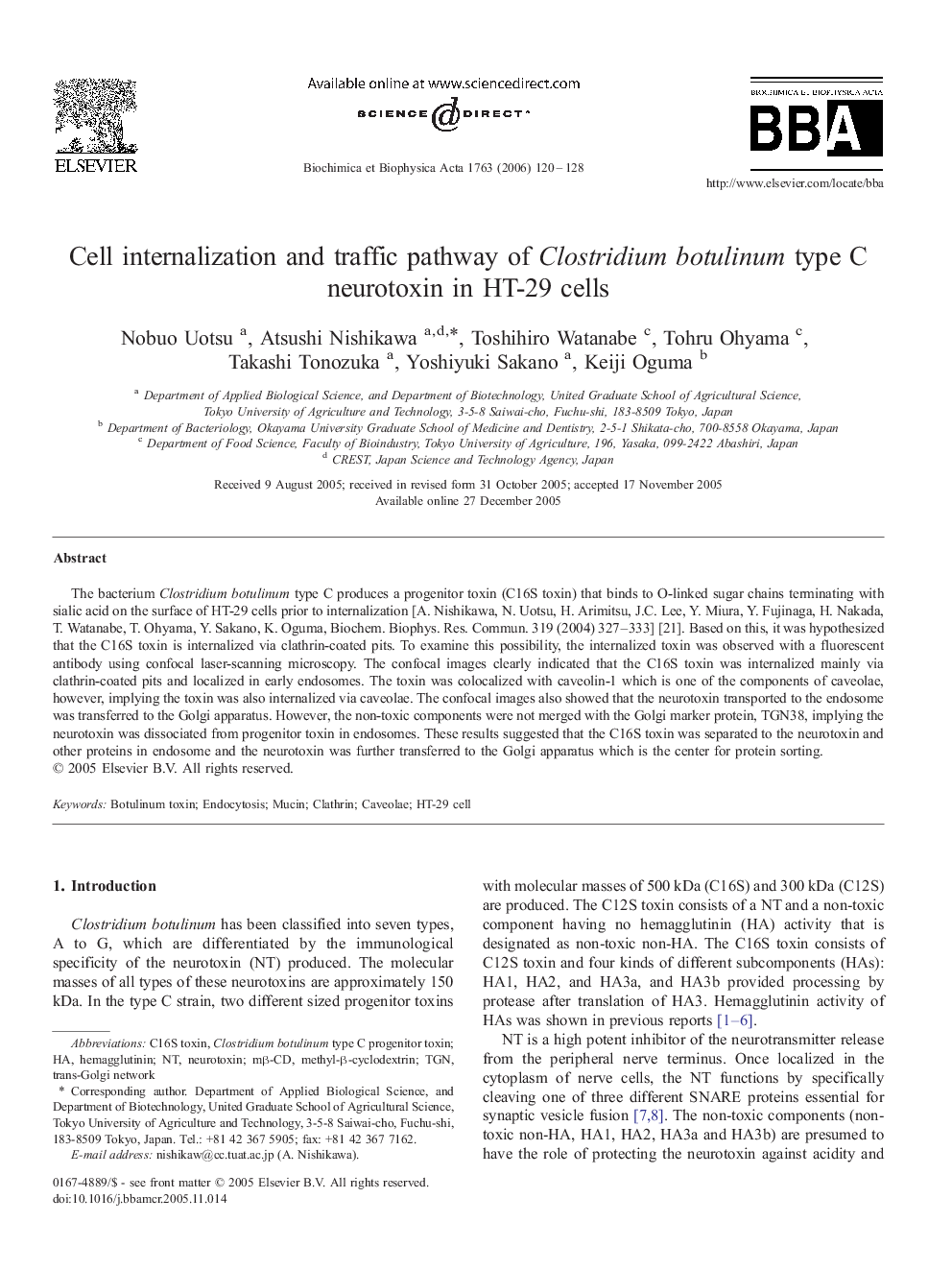| Article ID | Journal | Published Year | Pages | File Type |
|---|---|---|---|---|
| 1951732 | Biochimica et Biophysica Acta (BBA) - Molecular Cell Research | 2006 | 9 Pages |
The bacterium Clostridium botulinum type C produces a progenitor toxin (C16S toxin) that binds to O-linked sugar chains terminating with sialic acid on the surface of HT-29 cells prior to internalization [A. Nishikawa, N. Uotsu, H. Arimitsu, J.C. Lee, Y. Miura, Y. Fujinaga, H. Nakada, T. Watanabe, T. Ohyama, Y. Sakano, K. Oguma, Biochem. Biophys. Res. Commun. 319 (2004) 327–333] [21]. Based on this, it was hypothesized that the C16S toxin is internalized via clathrin-coated pits. To examine this possibility, the internalized toxin was observed with a fluorescent antibody using confocal laser-scanning microscopy. The confocal images clearly indicated that the C16S toxin was internalized mainly via clathrin-coated pits and localized in early endosomes. The toxin was colocalized with caveolin-1 which is one of the components of caveolae, however, implying the toxin was also internalized via caveolae. The confocal images also showed that the neurotoxin transported to the endosome was transferred to the Golgi apparatus. However, the non-toxic components were not merged with the Golgi marker protein, TGN38, implying the neurotoxin was dissociated from progenitor toxin in endosomes. These results suggested that the C16S toxin was separated to the neurotoxin and other proteins in endosome and the neurotoxin was further transferred to the Golgi apparatus which is the center for protein sorting.
